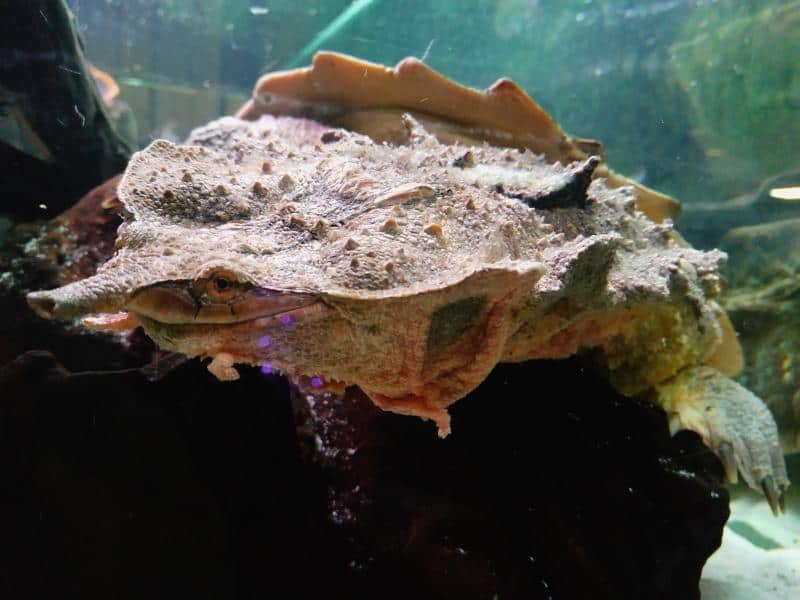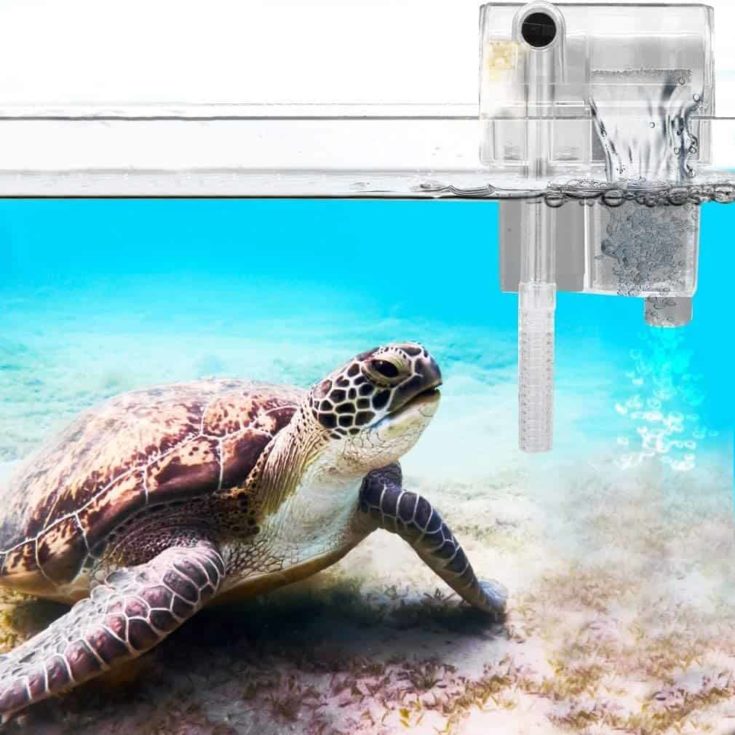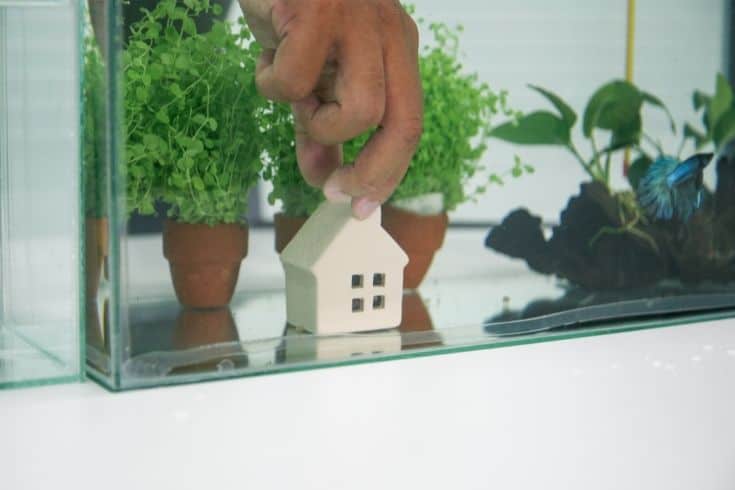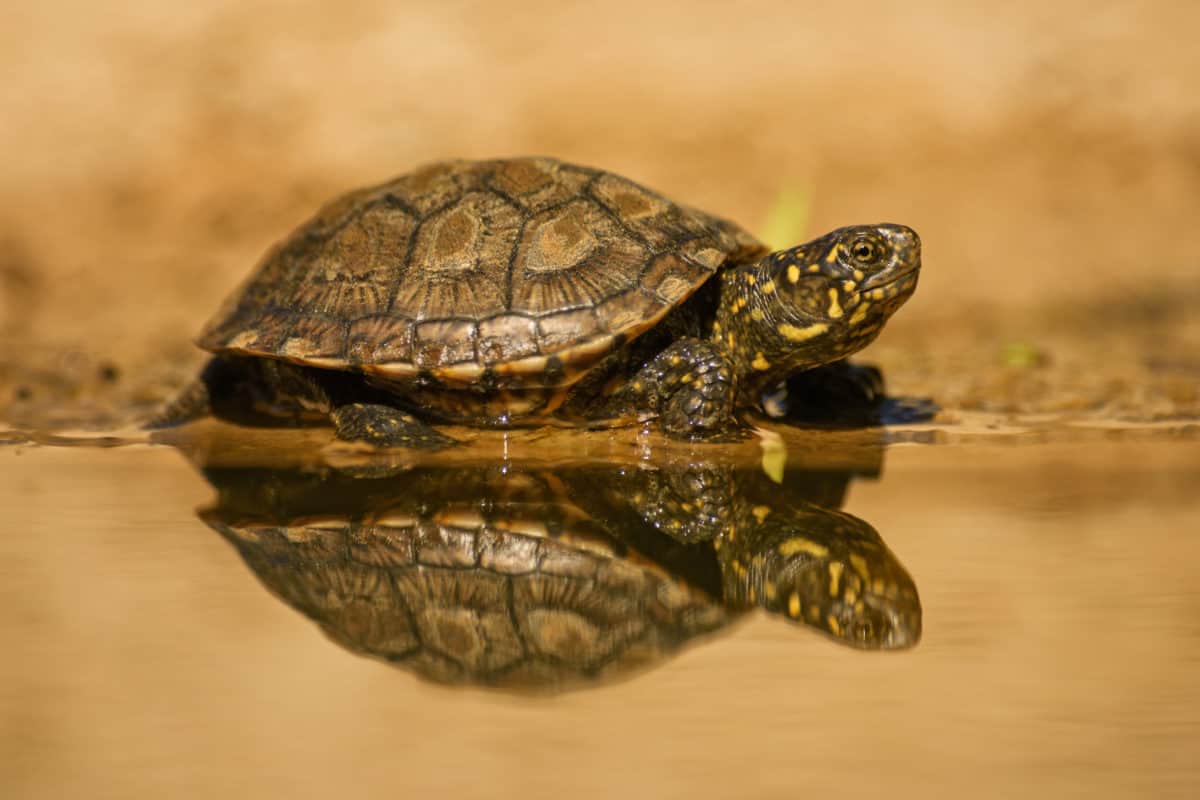When people think about turtles, they tend to think about the cute little creatures swimming in their local zoo’s turtle pond. In captivity, however, the question of whether or not you can keep a turtle in a fish tank comes up over and over again. The answer, as with most questions of this nature, lies below the surface.
This guide will first present an overview of the different turtle species on the market today, including their pros and cons. Next, it will provide some tips for selecting your new pet and set up a fish tank that will meet all of its needs. Finally, the guide will cover the general care required for your turtle in terms of food, water quality, and habitat enrichment.
If you’re wondering whether or not you can keep a turtle in a fish tank, this guide is for you. So let’s get started with our first tip.
Know the Species (and Their Minimum Tank Requirements)
There are many different species of turtles in pet stores today, including red-eared sliders, cooters, and painted turtles. The majority of people who buy turtles for their fish tank don’t know what species they have, however, so let’s take a moment to browse through a typical pet store’s selection.
As you can see, each species has its own unique shell pattern and coloration. The turtles also have different growth rates, are more or less aggressive with other turtles, have different water tolerances, and eat different kinds of food. One last thing that makes these reptiles stand out is their minimum tank requirements, which range from 10 gallons to 300 gallons.
Turtle Species
Minimum Tank Requirements
Painted Turtle
50 Gallons
Red Eared Sliders
100 Gallons
Snapping Turtle
200 Gallons
Common Snapping Turtle
200-300+ Gallons
Swimming
Midwater shoaling
These minimums are for hatchlings that have never been exposed to the outdoors at all. Once they’ve had a chance to grow, you will need to provide them with bigger tanks. These numbers are the smallest tanks that could be used for your turtle depending on which species it is and how big it gets.
Now that we know what kind of tank size we’ll need to house our turtles in, let’s take a look at these incredible creatures and see what makes them so special.
Can Turtles Be Kept In A Traditional Fish Tank?

The vast majority of traditional glass fish tanks with glass lids are not turtle-proof. Turtles can easily break the glass with their claws and shells, seriously injuring themselves in the process. If you want to keep turtles in your fish tank, they will need some kind of protective covering over the top of it when it isn’t being supervised.
This is where things get interesting because there are simply so many different ways to go about this. Some people use old aquariums with the glass removed, some have custom welded screen covers, and others completely cover their entire fish tank with wood or plexiglass. The sky is truly the limit here for how your turtle-proof fish tank will be.
In essence, the only turtle-proof fish tank is one with a sturdy lid on it. You will also need one that is strong enough to support the weight of your turtle and whatever you decide to put on top of it. For reference, a turtle’s butt can weigh as much as 25% of its total body weight. Your tank will need to be strong enough to hold the weight of your turtle and any other belongings you put on top.
So, yes, you can keep a turtle in a fish tank. You just need to pick your tank carefully and be mindful of the fact that it will need to be turtle-proofed. If you’re looking for ideas, check out our list of best turtle tanks!
What Types Of Equipment Do You Need In A Turtle Tank?
If you intend to keep turtles in a fish tank as pets, they will need some specific equipment to make sure they are properly cared for. This includes their tank, UVB lighting, basking lights, water filtration system, thermometer, basking platform(s), and more. Here’s a quick rundown of what you should have in your fish tank, should you decide to use it for your pet turtle:
Water Filter

Although turtles are capable of surviving in shallow waters, many species also require a body of water that is deep enough for them to swim vertically in. This is where a reliable water filter that is rated for your tank size comes in handy. Not only will it help keep your water clean, but it will turn over the entire volume of it several times every hour.
This is important because turtles can be easily stressed if their environment’s water isn’t being properly purified and broken down at a high enough rate. Aquatic turtles in particular can be seriously injured or even killed by toxic compounds in their water if it isn’t being purified properly.
Chemical filters and activated carbon will remove most toxins, but won’t break down nitrates and phosphates. Turtle-specific water filters on the other hand, such as the Whisper EX Series, are made to do this at a faster rate than normal filters. You can get a tank-specific water filter for around $20 and if you’re using a traditional fish tank, this is almost a requirement.
UVB Lighting
Turtles require UVA and UVB light in order to stay healthy and create vitamin D3 in their skin. Vitamin D3 allows them to digest the calcium properly which they need in order to keep their shells, bones, and claws in good condition.
This is why it’s especially important to make sure your turtle has access to unfiltered sunlight or you can purchase a reptile UVB lamp for around $50-60. Look for the 5.0 rating on any light you use because anything less may not be strong enough to promote proper vitamin D3 synthesis.
Basking Light(s)
Turtles require a basking area where the temperature is around 85-88 to 90 °F and they can dry out and warm up their bodies. This is why it’s necessary to have a basking light in your fish tank so you can create an artificial “hot spot” for them to bask in. Generally speaking, any light bulb rated for the temperature range your turtle tank falls under will do.
Do note that basking lights can get extremely hot, so you’ll want to place the bulb into a porcelain socket rated for the wattage of your lamp. This will prevent it from shorting out if it gets wet or topples over. In addition, you should keep your tank away from any other areas in your home that might catch fire or experience dangerous fumes if it happens to tip over.
Pet shops will usually have porcelain sockets available if you don’t want to make an extra trip to the hardware store. These will usually only cost a couple of dollars more than regular sockets and they’re worth it.
Water Heaters
The vast majority of turtle owners will use a standard aquarium water heater to keep the water in their fish tank at the proper temperature for their pet turtle. These can be purchased for around $20 and are easy enough to install in your tank. However, you should always double-check that the water heater you’re buying is rated for your tank size and wattage.
When you get it, make sure to also pick up an aquarium thermometer that is capable of measuring above 150° F because these tanks can get very hot. Even if you’ve purchased a water heater for a smaller tank, there is always a risk that it can malfunction and cause your turtle to get seriously injured or killed.
In addition, a heater guard is highly recommended if you have a red-eared slider, map turtle, or any other species that likes to dig around in the substrate and climb on objects in their tank. Turtles are curious creatures, and safety precautions like these will help prevent your pet from burning themselves on the heater and is considered good husbandry in general.
Tank Decorations

Turtles require a lot of things to stay healthy and happy in captivity, but one of the most overlooked requirements is something that you probably already have: objects for them to climb on. Sliders and other aquatic turtles need to be able to climb out of the water and bask, and they also like being able to hide from time to time.
This makes a sturdy artificial or natural land area in your tank an important feature. Be sure to have a variety of branches and other structures for them to lift themselves out of the water on so they can bask, dry off, and hide from time to time. In addition, you’ll want to leave plenty of open space in your tank for them to swim about.
For ideas on tank decorations, check out our article on cool turtle tank setups!
Outdoor Ponds vs. Indoor Tanks
Some enthusiasts like to keep their turtles in an outdoor pond habitat, particularly if they live in a warmer climate like Florida or the surrounding area. This is an excellent option if you have the floor space for it and can provide a plentiful source of food such as fish, frogs, and worms. If your turtle has grown too large to be housed in a fish tank, you can always move it into an outdoor pond.
One thing to note about the water environments found in outdoor ponds is that you’ll need to keep them free of debris and algae which can be harmful to your turtle if they ingest it while scavenging for food. They also require frequent maintenance because turtles are messy animals, so you should factor this into your decision about whether or not an outdoor pond is appropriate for your pet.

If you’re just looking to give your turtle a place to explore and get some exercise, then you can create a smaller version of an outdoor pond for your fish tank. What you’ll need is a large container like a kiddie pool or plastic storage bin that provides enough room for your pet to crawl around in. Make sure to add sand or mulch on the bottom with a small water section where they can soak their bodies.
Other than that, traditional aquariums are the more popular choice for turtle owners. They can be decorated with plants and ornaments to create an aesthetically-pleasing environment that’s easy enough to clean without a lot of extra maintenance on a daily basis. As long as there’s sufficient aquarium space for your turtle, you should be good to go.
Can Turtles and Fish Live Together?
Although turtles and fish are both aquatic species (the former being semi-aquatic), there are some important considerations to take into account before putting them together in the same tank. So, before you go housing your pet turtles in fish aquariums that you already have, here are a few reasons why you may want to reconsider:
Many turtles will try to eat the fish in their tank
It’s not that they’re hungry and the aquarium isn’t providing enough food for them (contrary to popular belief, turtles can actually go weeks without eating ). They simply like the taste of fish and it provides them with the dietary benefits they need to grow and stay healthy.
Most turtles won’t do a lot of hunting in their tanks, but the possibility of it still poses a potential threat for fish that are vulnerable while hiding in their habitat. If you don’t want to find yourself with a bunch of stressed-out fish on your hands, consider investing in commercial fish hideouts that you can place in your aquarium to give them a safe place to relax.
These hideouts can provide small to medium-sized fish with the security they need to feel comfortable in their environment without risking an attack by a turtle that may have gotten too close for comfort. Just make sure to change out the water in their bowl more often if you have a turtle because their waste can be toxic to fish over time.
Tropical fish species should not be kept with turtles
Sure, your pet turtle may seem harmless enough during the day while it’s resting in its tank. But what happens when you turn off the lights and go to sleep? Once they’re less active, their predatory instincts kick in and they can become more aggressive. It’s for this reason that tropical fish should not be kept with turtles because it puts them at risk of getting hurt.
These species of fish tend to have colorful bodies and flowing fins that are extremely attractive to turtles that are looking for a tasty meal. They won’t necessarily see them as food, but they will have an instinctual urge to attack these fish or nip at their fins. The last thing you want is to find holes in the beautiful fins of your betta fish, or the tails of your fancy guppies!
Some hobbyists may wonder if turtles are actually speedy enough to catch fish, but they’re proven to be quick swimmers. While the fastest fish are able to dart away from potential danger, slower fish are at risk of being eaten or injured by a turtle. When you have a determined turtle in your tank, you are bound to find more than a couple of fish with torn fins or missing scales.
What If We Want To House Our Turtles With Fish?
Despite the risks, many turtle keepers have had success keeping fish alive for years next to their turtles without incident. Here are some suggestions for fish and turtle enthusiasts who are looking for ways to make it work:
Rearrange Your Tank Every Few Days
If you have a turtle in your tank, the risk of them catching fish can increase while they sleep. If this is an issue, move the substrate around every few days so that it’s impossible for them to use their keen sense of smell to track down hidden fish in the shaded areas of your aquarium.
Opt For Freshwater Fish That Are Roughly The Same Size
There is a chance that even with the changes you make to your tank, some fish may still get caught by your turtle. If this happens, opt for species that are roughly the same size as your turtles. For instance, snappers and other large turtles should be housed with larger types of fish such as cichlids, goldfish, or koi. Smaller turtles can have fish such as platys or tetras as tank mates.
Make Sure That Everyone Has The Same Temperature Preferences
One of the most important things to do is make sure that your turtle and their tank mates have similar temperature preferences. A good rule out of this would be to use an aquarium heater so all occupants can enjoy the warm water. Most turtles cannot regulate their body temperatures without the help of an external heat source, so steer clear of cold-water fish that thrive in chillier conditions.
Avoid Large Predator Fish
Last but not least, steer clear of large, dangerous fish such as piranhas and pike. Not only do they pose a risk of injury or fatality to your turtles, but they can also eat smaller fish that you want as tank mates. That’s the last thing you want to see happen, so take into consideration that your turtle’s tank should be equipped with long-lived fish species.
Final Thoughts
So, can you keep a turtle in a fish tank? The answer to that depends on two very important factors: Whether or not your aquarium is well-equipped to house a turtle, and how careful you are in selecting appropriate tank mates for your pet. Do so, and you’ll have nothing but happy turtle companions!
Did you enjoy this article or learn something new? Please share this article with your friends if you found it helpful! And if you have something to add, leave a comment below. We love hearing from our readers, so please stay in touch!
